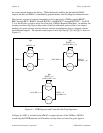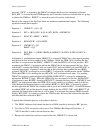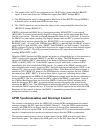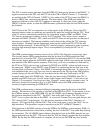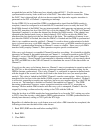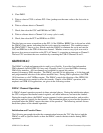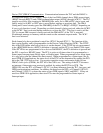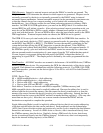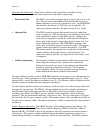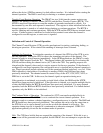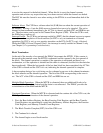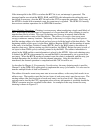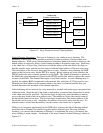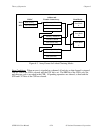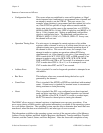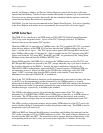
Chapter 6 Theory of Operation
© National Instruments Corporation 6-19 GPIB-1014 User Manual
Operands and Addressing. Three factors affect how the actual data is handled: device
(destination) port size, operand (from source) size, and address sequencing.
• Device Port Size The DCR is also used to program the device port size to be 8 or 16
bits. The port size is the number of data bits that the device can
handle (transmit or receive) in a single bus cycle. For GPIB DMA
data transfers, the device (or TLC) port size is eight bits. For
memory-to-memory transfers, the port size can be 8 or 16 bits.
• Operand Size The OCR is used to program the operand size to be either byte,
word, or longword. The operand size is the number of bits of data
to be transferred to honor a single DMA request. Multiple bus
cycles may be required to transfer the entire operand through the
device port if the operand is larger than the device port size. For
single-addressing operations, like GPIB DMA operations, the
device port size and the operand size must be equal. The transfer
counter counts the number of operands transferred. For GPIB
DMA data transfers, the operand size is eight bits and the transfer
counter indicates the number of bytes to be transferred. For
memory-to-memory transfers, the operand size can be byte, word,
or longword.
• Address Sequencing The sequence of addresses generated to address the memory and
device depends on the port size, operand size, whether the
addresses are to count up, down, or not change, and whether the
transfer is explicitly or implicitly addressed. The Sequence
Control Register (SCR) is used to program the memory address
count method and the device address count method.
For single-address transfers, such as GPIB DMA transfers, the device port size and operand size
must be equal. If the operand size is a byte, the address increment/decrement is one (1). If the
operand size is a word, the address increment is two (2). The Memory Address Register and the
transfer counter are updated after the operand is transferred.
For dual-address transfers (memory-to-memory), the device port size or the memory width need
not equal the operand size. The DMAC will run multiple bus cycles to transfer operand parts
until the entire operand has been transferred. Regardless of the way the address register is
counting (up or down), the DMAC accesses the parts of the operand in a linear increasing
sequence. The step between the addresses of the parts is two. The size of the parts is of course
the size of the device port or memory width. The number of parts is the operand size divided by
the port size or memory width. The address increment is added or subtracted after the operand is
transferred.
Address Register Operation. The DMAC has three 32-bit address registers per channel: the
Memory Address Register (MAR), Device Address Register (DAR), and the Base Address
Register (BAR). The MAR is used in all operations since all operations are between memory
and a device. This register is either initialized before the channel operation is started, or is
loaded during chaining or continue operations, which are discussed later. The DAR is used to



